NNCI Image Contest 2024 - Stunning
Most Stunning
This category celebrates the beauty of the micro and nanoscale. Please check out the images below and read a little about the research behind them.
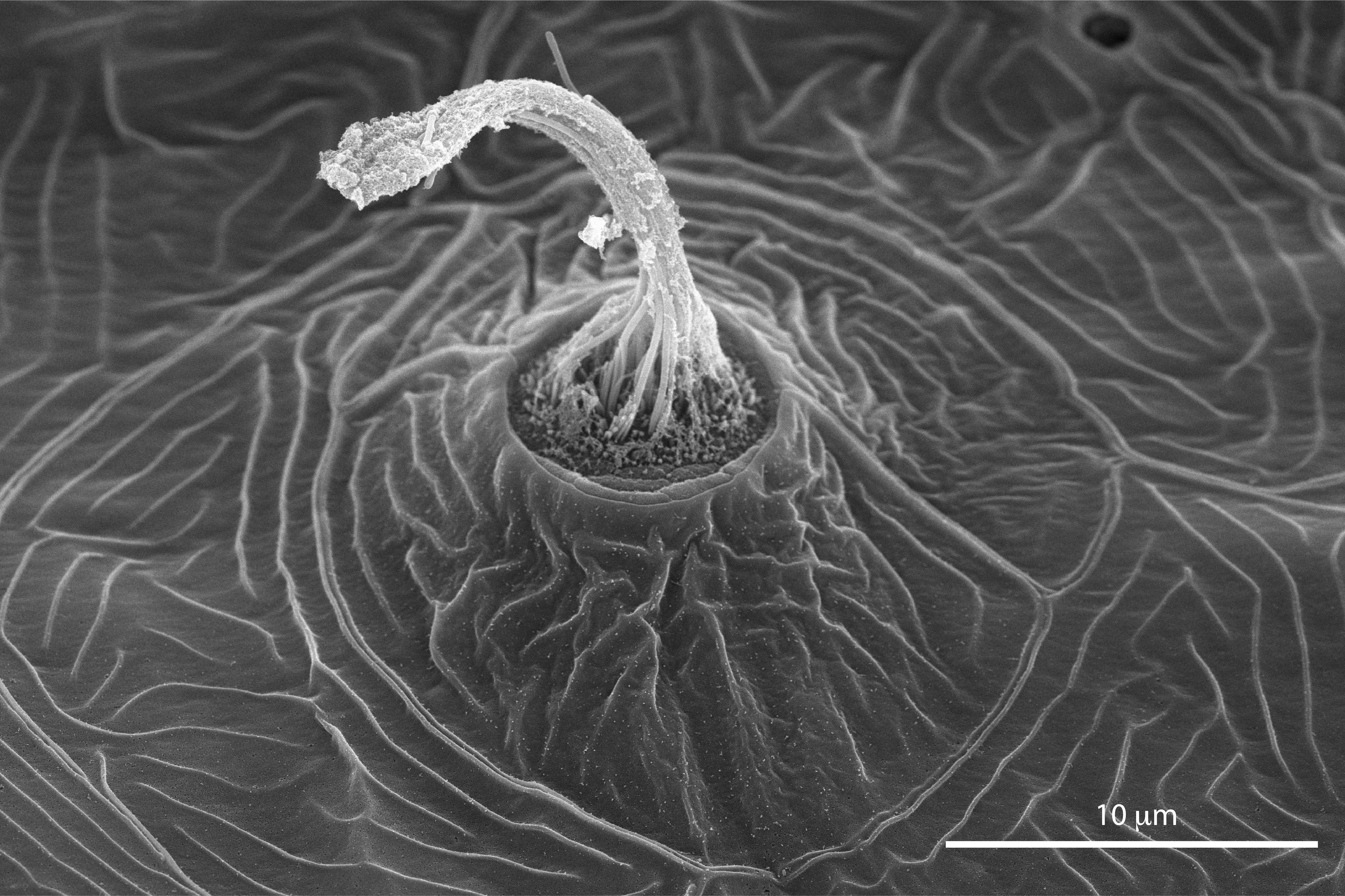
Contours of Perception
Artist: Sara Nieto Isaza, Research Staff, University of Kentucky
NNCI Site: KY Multiscale
Tool: FEI Helios Nanolab 660
This scanning electron microscopy image shows a neuromast from the lateral line of a zebrafish. The image focuses on hair cells, which detect mechanical changes and convert them into signals for the nervous system. We explore the natural remodeling of these.
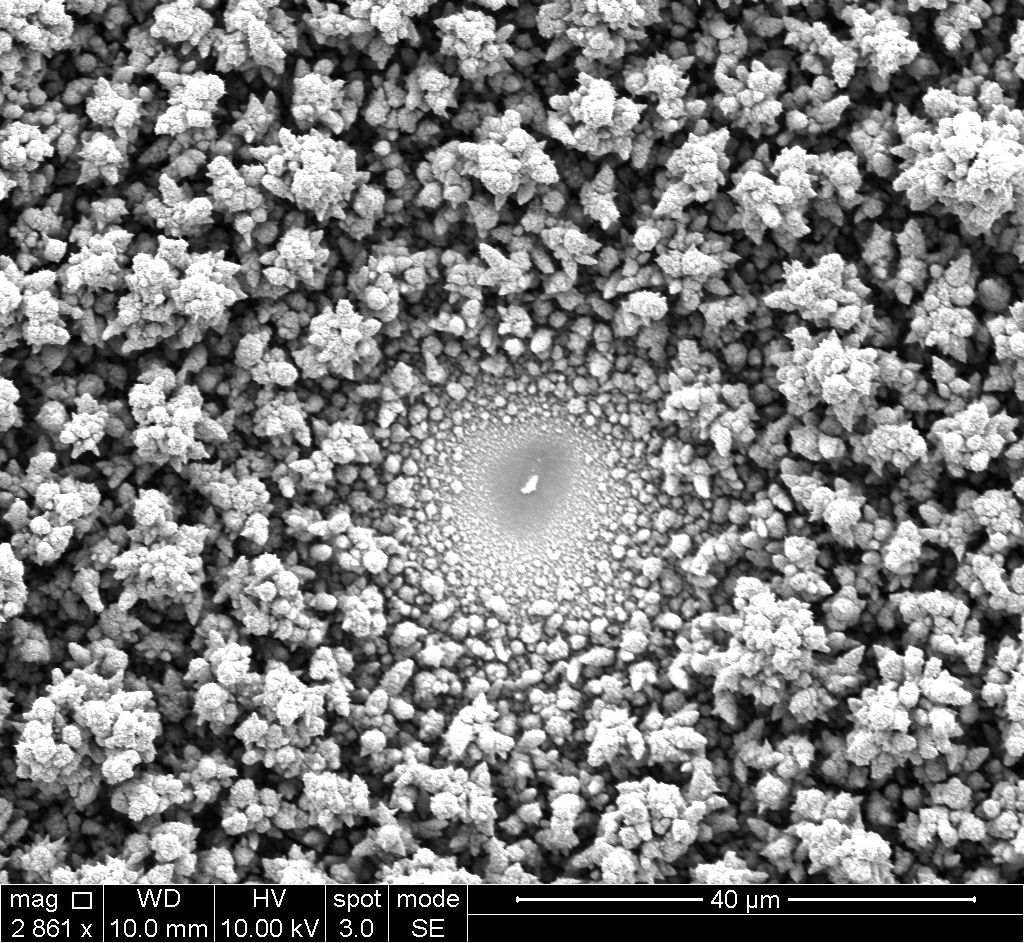
Palladium Crater Lake
Artist: Tianyue “Mary” Gao, grad student, University of Pennsylvania
NNCI Site: MANTH
Tool: Quanta 600 FEG ESEM
Palladium particles are electrochemically deposited onto the surface of a palladium foil to form a metal membrane designed for efficient proton transfer during water dissociation reactions. The surface and the thickness of the palladium membrane are examined under SEM.
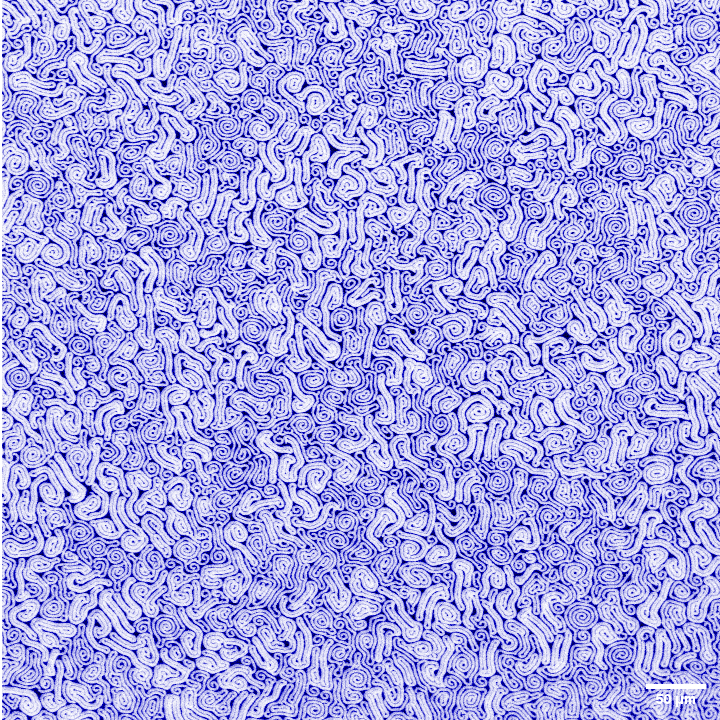
Swirling Surfactant Sea
Artists: Zachary McAllister (grad student), Anjiya Panjwani (undergrad researcher), University of Minnesota
NNCI Site: MiNIC
Tool: Confocal Fluorescent Microscope
What do you see? We see a swirling surfactant sea when we look at this image of surfactant doped with a fluorophore. The surfactant used naturally separates into two phases, one more compact than the other. The swirls are due to the addition of cholesterol to the sample which lowers the line tension. The less-compact phase selectively holds a fluorophore, which provides contrast. These all come together to create this beautiful, almost Post-Impressionistic (or van Gogh reminiscent) effect. Sample composition: 98 mol% 9:1 (1:4 r:racemic DPPC):hexadecanol, 1.5 mol% dihydrocholesterol, 0.5 mol% Texas-Red DHPE at a surface pressure of 11.9 mN/m.
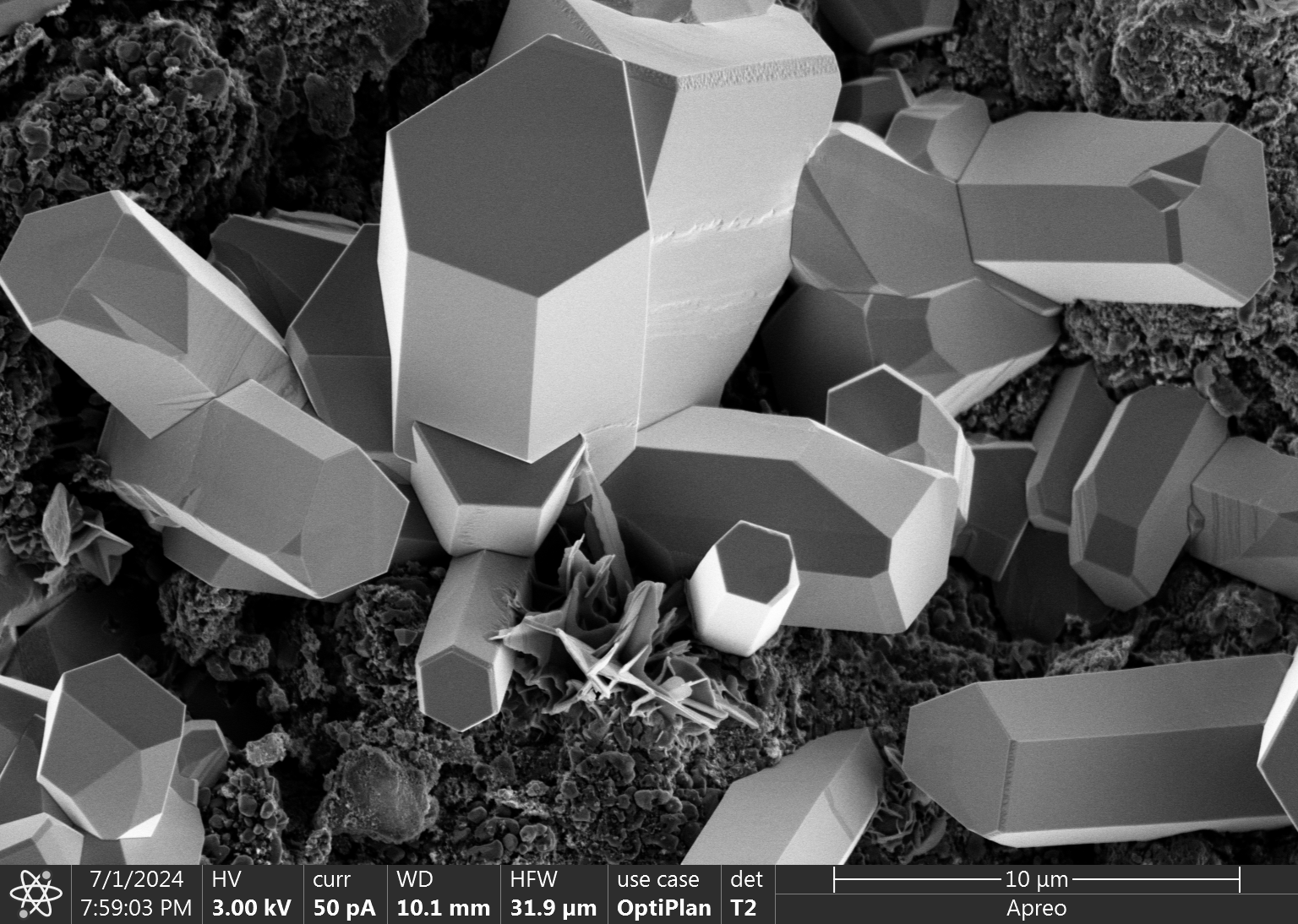
Nano cubism
Artist(s): Marco Gigantino, Post Doctoral Fellow, Stanford University
NNCI Site: nano@stanford
Tool: Apreo SEM
A scratch on a common K-type, subject to high temperature and methane atmosphere, revealed ordered structures on the surface

Blossoms of Matter
Artists: Anika Promi (Graduate Research Assistant), Feng Lin (Associate Professor), Department of Chemistry, Virginia Tech
NNCI Site: NanoEarth
Tool: JEOL-IT-500
This is an image of a single secondary particle of a cathode material precursor [Ni0.33Fe0.33Mn0.33(OH)2], which is used in making cathodes for sodium-ion batteries. Thousands of nanosized primary flake-like particles aggregate to form this single cathode precursor particle, resembling the arrangement of a flower. My research focuses on investigating the effects of synthesis parameters on particle morphology and how they affect the electrochemical performance of Sodium-ion batteries.
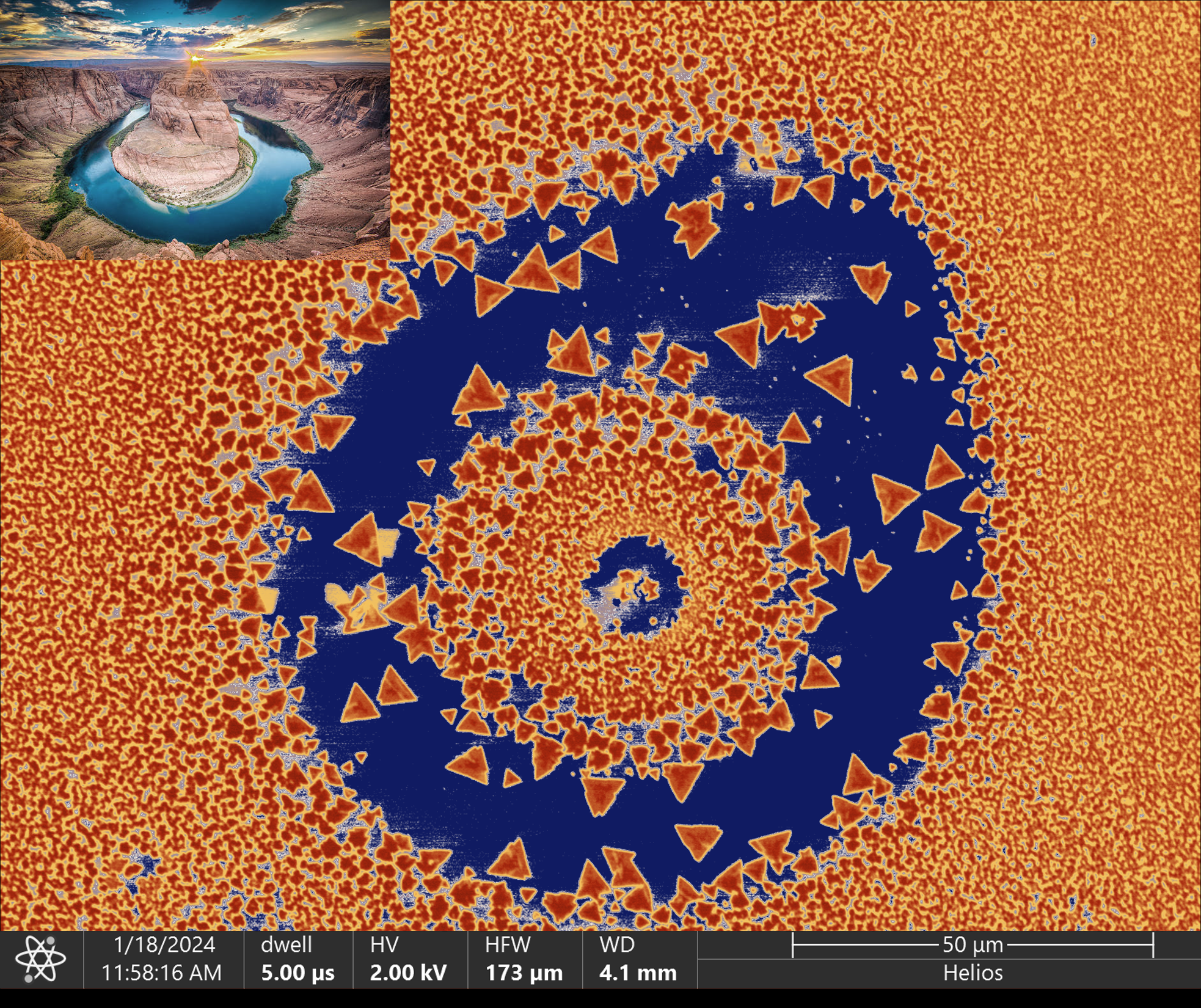
Horseshoe Bend of 2D material
Artist(s): Md Ashiqur Rahman Laskar (Graduate student), Umberto Celano (Associate professor), Arizona State University
NNCI Site: NCI-SW
Tool: Helios 5UX SEM/FIB
This represents a scanning electron microscopy (SEM) image of MoS2, a 2D material grown on sapphire substrate which resembles to the world-famous Horseshoe Bend (from top view), a natural beauty located in Arizona state. The microscopy image was captured with the purpose of investigating the continuity of the MoS2 material. Here the inset image is an actual photograph of the Horseshoe Bend.

Colorful Waves Along the Coast
Artists: Spencer Pak, Graduate Research Assistant, University of Nebraska-Lincoln
NNCI Site: NNF
Tool: Nikon XT H 225 ST
X-ray computed tomography of a 3D printed liquid metal elastomer foam reveals the porous nature of the part. Porosity is typically detrimental for most 3D printed structures. However, it can be exploited in liquid metal foams to create highly sensitive soft capacitive sensors or materials for passive thermal heat management with reduced density. Such a material could be used for improving soft robots, wearable electronics, and other human-machine interfaces.
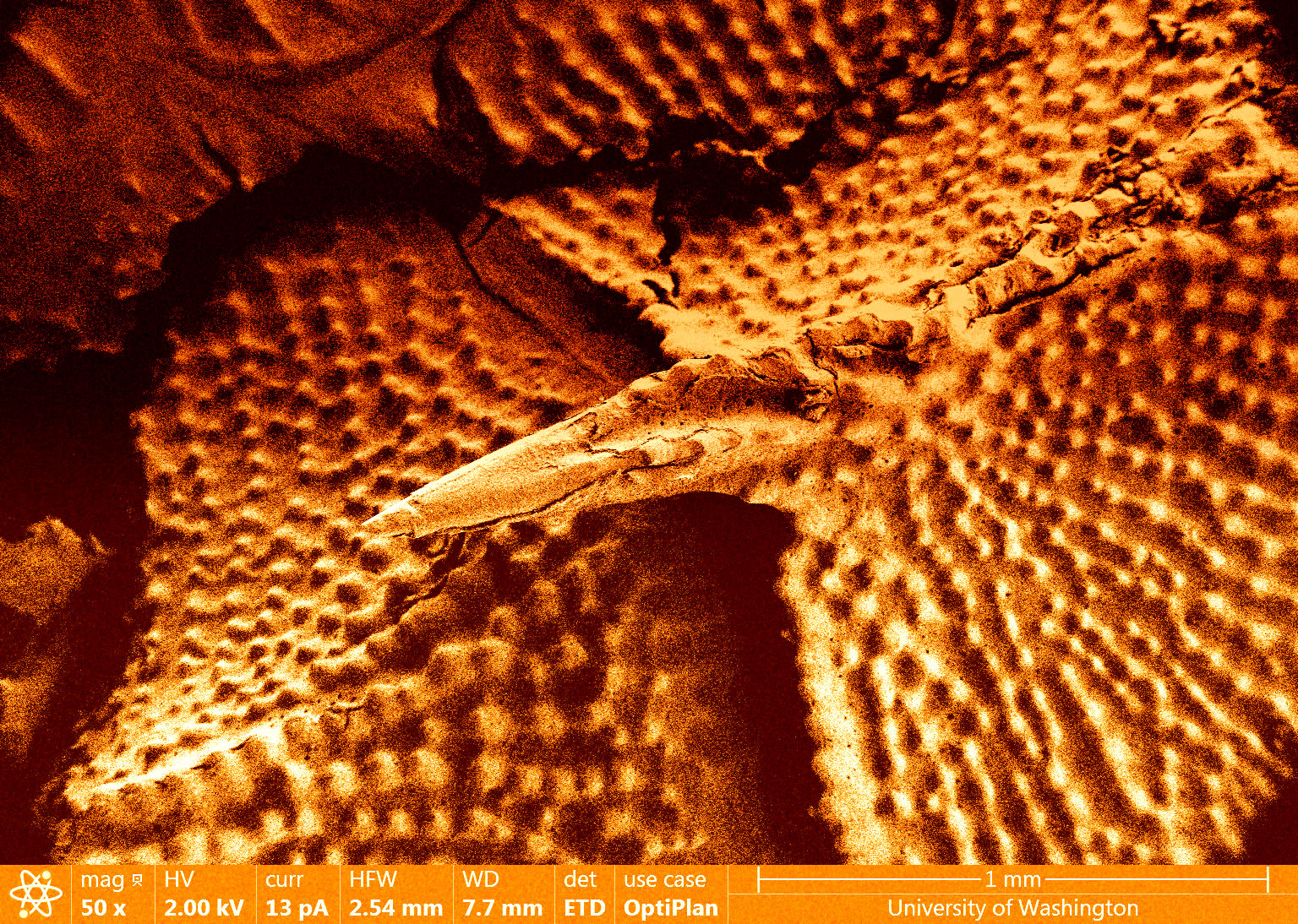
Shai-Hulud and the Ripples in Sand
Artist: Ankush Nandi, PhD student, Vashisth Research Lab, Mechanical Engineering, University of Washington
NNCI Site: NNI
Tool: Apreo1 SEM by ThermoFisher Scientific
The fish scales-inspired bulletproof armor can combine nature's ingenious design with modern materials for superior protection and flexibility. Drawing from the interlocking, overlapping structure of fish scales, the armors can offer enhanced durability and mobility. Each scale, if meticulously crafted from advanced composites, can provide lightweight yet formidable defense against ballistic threats. The scalable design ensures comprehensive coverage and freedom of movement, adapting seamlessly to the wearer’s body. Ideal for military and law enforcement, this innovative armor if designed as inspired by nature will redefine personal protection, merging bio-inspired aesthetics with cutting-edge technology to create a new standard in defensive gear.
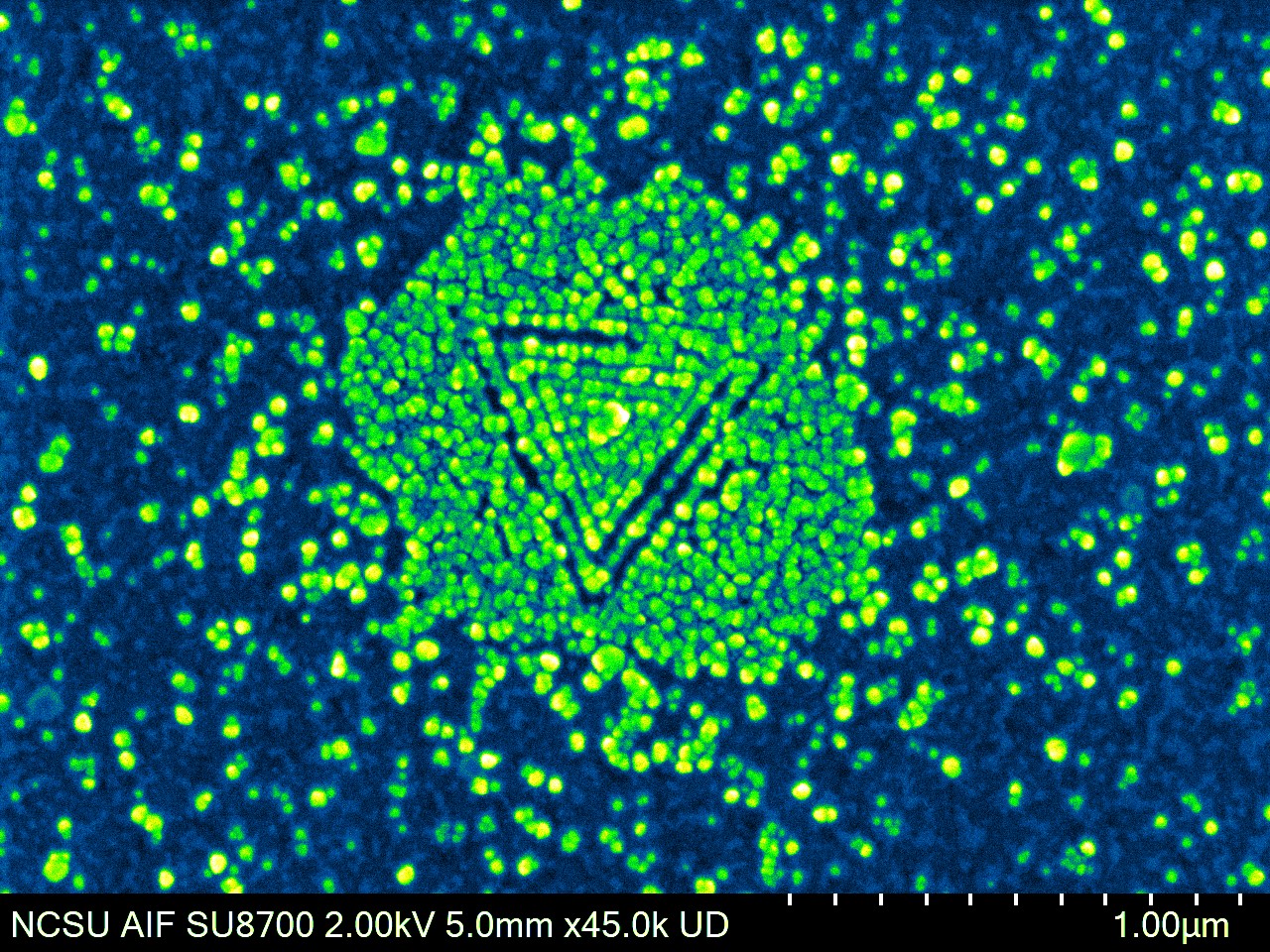
Research Triangle Community
Artist: Hannah Margavio, Graduate Student, NC State University
NNCI Site: RTNN
Tool: Hitachi SU 8700 SEM
Captured using the SU 8700 Hitachi SEM at the AIF, this molybdenum disulfide crystal attracts TiO2 nuclei to its high surface energy edges during growth by atomic layer deposition, just as the RTNN attracts STEM leaders from all over the world to its bustling research community. This work celebrates a collaborative collection of nanoscale fabrication (atomic layer deposition, area selective deposition) and analysis techniques (SEM).
Dimensions of Etched Porous Silicon
Artist: Gabriella Stark, Graduate Student, University of California - San Diego
NNCI Site: SDNI
Tool: Zeiss Sigma 500 SEM
This image depicts the layers of etched porous silicon. The perforations reveal layers of etched silicon, which will eventually break apart, turning into nanoparticles with endless capabilities.
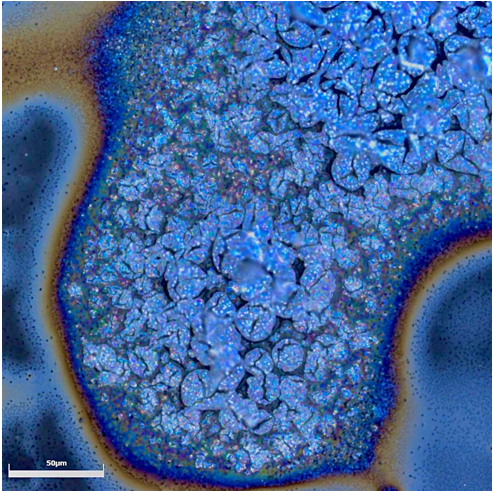
Micro Jewels
Artist: Micro Jewels – Mikis Mays, Graduate Student, Gerhardt Group, Georgia Institute of Technology
NNCI Site: SENIC
Tool: Olympus LEXT
Confocal microscope image of multilayer Indium Tin Oxide (ITO) thin films deposited using the spin-coat technique. Although ITO is transparent, photon scattering occurs due to films thickness, producing the colors shown in the image
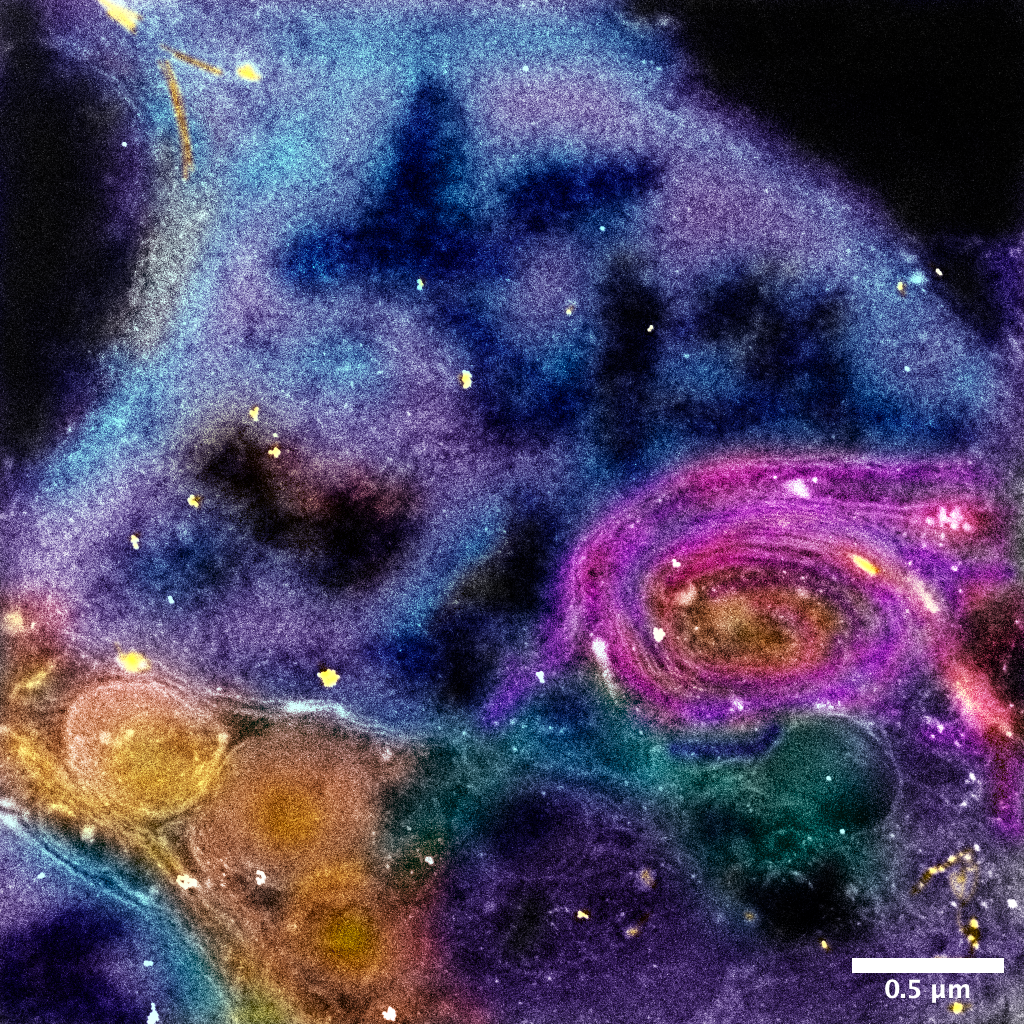
Galaxy Within a Cell
Artists: Shanna Davidson, Post-doc, Marcelino Research Group, Northwestern University
NNCI Site: SHyNE
Tool: HITACHI HD-2300A CRYO S/TEM
This image, taken with the HITACHI HD-2300A CRYO S/TEM, has been falsely colored to show the wonders of the inner working of a coral cell. The cell contains a nucleus with chromatin (blue and purple), surrounded by other cellular organelles (pink, orange and green), to look like a far away galaxy. The bright white spots are gold nanoparticles (AuNPS), used to identify regions of interest.

